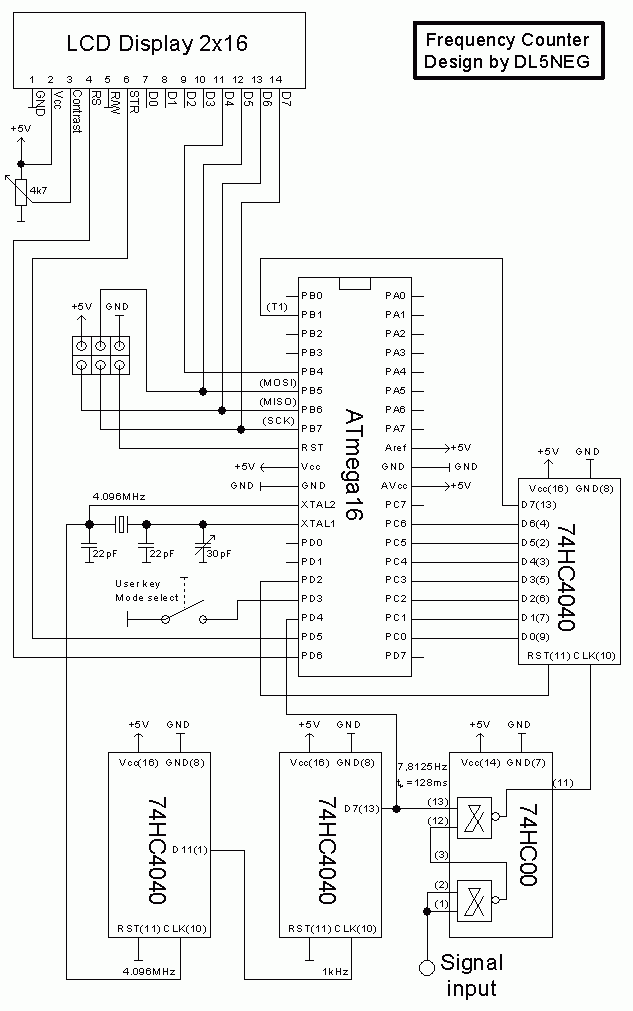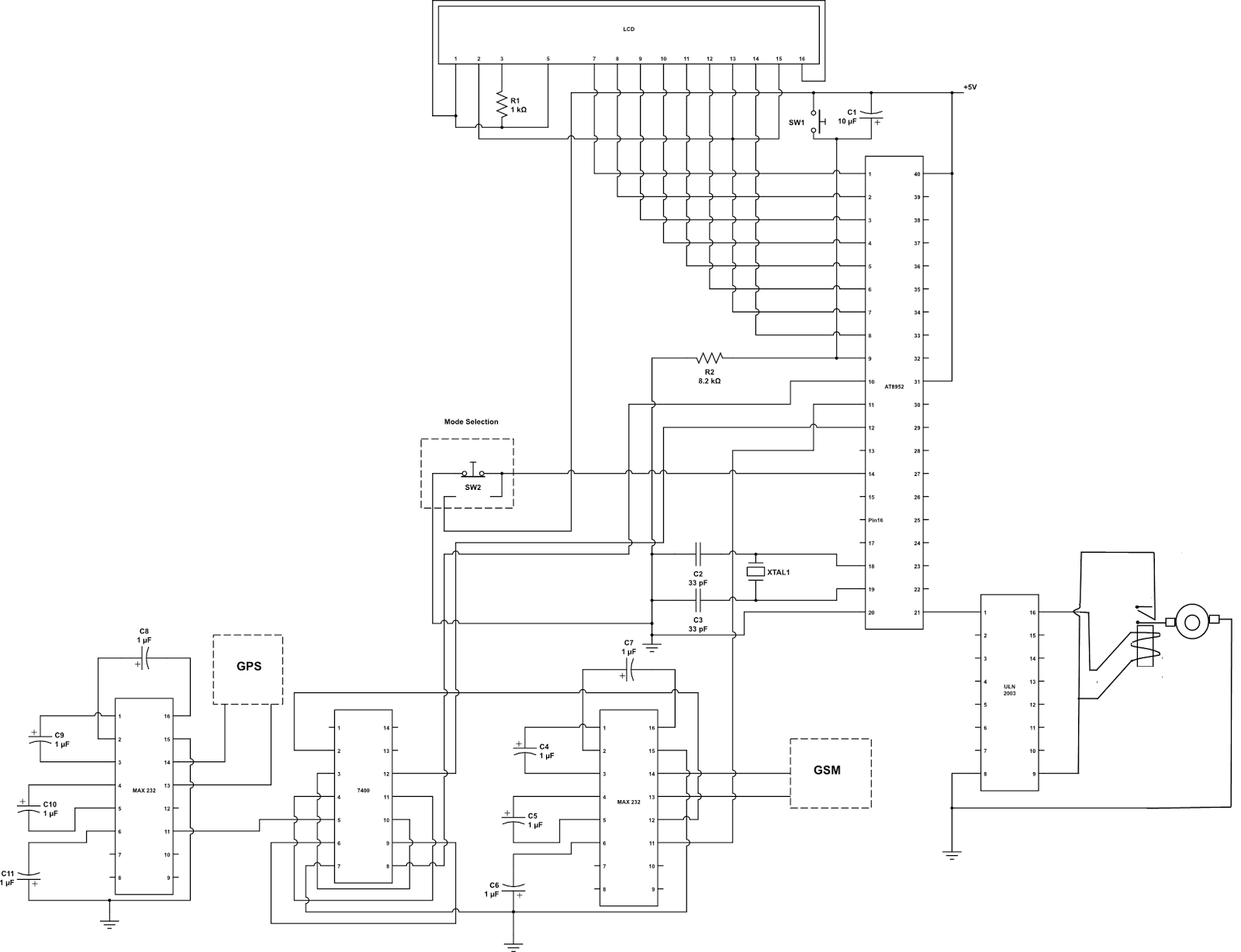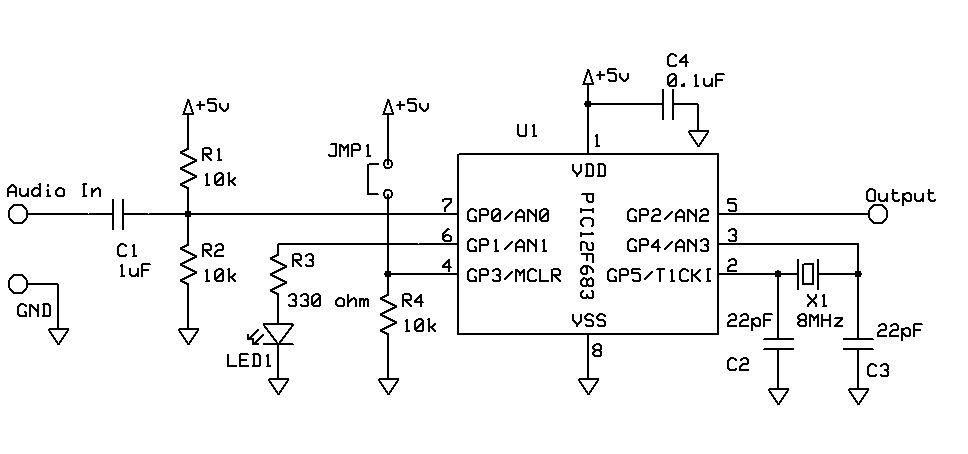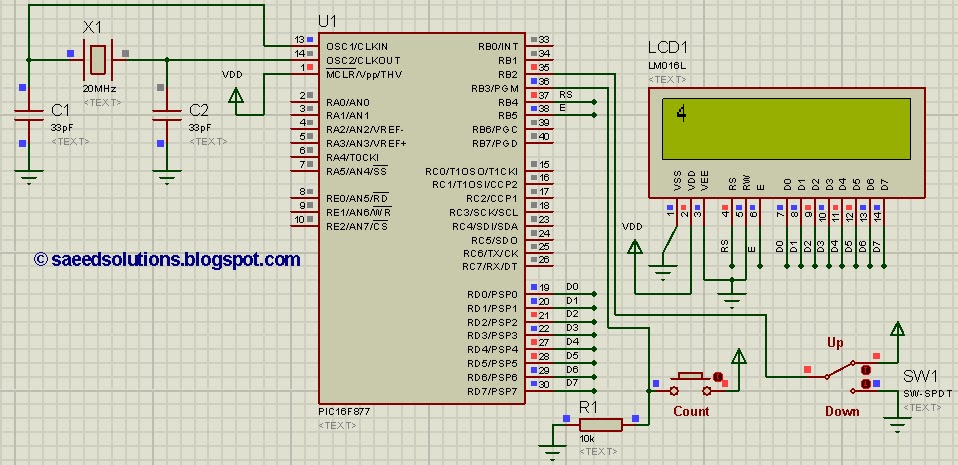
microprocessor based frequency counter

To ensure the circuit functions properly, it is crucial to correctly configure the fuse bits within the AVR microcontroller. These fuse bits can be set using the programmer employed to upload the software. For those interested in the technical background, refer to the ATmega16 datasheet, specifically pages 254-256. The logic of these bits operates in an active low manner, meaning programmed equals 0 and unprogrammed equals 1. The bits that determine the clock source of the AVR, known as CKSEL 0-3, are programmed to 0 when the chip is shipped. This configuration causes the controller to utilize the internal clock source and prevents the crystal oscillator from starting. By setting all CKSEL 0-3 bits to unprogrammed (1), the external crystal oscillator is selected. Additionally, the CKOPT bit, when programmed to 0, switches the crystal operation from weak amplitude to full amplitude, ensuring that the 74HC4040 receives a sufficient input signal.
The AVR microcontroller's fuse bits play a critical role in determining the operational characteristics of the device. The configuration of these bits is essential for selecting the appropriate clock source, which directly impacts the performance and functionality of the entire circuit. The CKSEL bits, which are specifically designed to select the clock source, must be set according to the desired application. When configured to use the internal clock, the microcontroller operates at a default speed, which may be adequate for basic applications. However, for applications requiring higher precision timing or synchronization, the use of an external crystal oscillator is recommended.
The CKOPT bit further enhances the performance of the oscillator circuit. By enabling full amplitude output, it ensures that the signal integrity is maintained, allowing downstream components, such as the 74HC4040 frequency divider, to function effectively. The 74HC4040 relies on a stable and robust clock signal to produce accurate frequency division, making the proper configuration of the CKOPT bit essential for reliable operation.
Overall, understanding and correctly setting the fuse bits of the AVR microcontroller is vital for achieving optimal circuit performance. Careful attention to the configuration of CKSEL and CKOPT bits can significantly influence the behavior of the microcontroller and its interaction with other components in the circuit. Therefore, thorough knowledge of the ATmega16 datasheet and the implications of fuse bit settings is necessary for engineers and technicians involved in designing and implementing AVR-based systems.In order to make the circuit work, it is important to set the fuse bits inside the AVR micro controller correctly. Theses fuse bits can be set with the programmer that is used to flash the software. For those that are interested to understand the background, have a look at the ATmega16 datasheet pages 254-256.
The logic of the bits is active low, i. e. programmed=0, unprogrammed=1. The bits that determine the clock source of the AVR, CKSEL 0. 3, come programmed when the chip is shipped, i. e. set to 0. That is the reason why the controller runs on internal clocking, and does not even start the crystal. By setting all CKSEL 0. 3 to unprogrammed (1), the external crystal is selected. The CKOPT programmed (0) switches the crystal from weak amplitude to full amplitude, so that the 74HC4040 gets enough input signal.
🔗 External reference
The AVR microcontroller's fuse bits play a critical role in determining the operational characteristics of the device. The configuration of these bits is essential for selecting the appropriate clock source, which directly impacts the performance and functionality of the entire circuit. The CKSEL bits, which are specifically designed to select the clock source, must be set according to the desired application. When configured to use the internal clock, the microcontroller operates at a default speed, which may be adequate for basic applications. However, for applications requiring higher precision timing or synchronization, the use of an external crystal oscillator is recommended.
The CKOPT bit further enhances the performance of the oscillator circuit. By enabling full amplitude output, it ensures that the signal integrity is maintained, allowing downstream components, such as the 74HC4040 frequency divider, to function effectively. The 74HC4040 relies on a stable and robust clock signal to produce accurate frequency division, making the proper configuration of the CKOPT bit essential for reliable operation.
Overall, understanding and correctly setting the fuse bits of the AVR microcontroller is vital for achieving optimal circuit performance. Careful attention to the configuration of CKSEL and CKOPT bits can significantly influence the behavior of the microcontroller and its interaction with other components in the circuit. Therefore, thorough knowledge of the ATmega16 datasheet and the implications of fuse bit settings is necessary for engineers and technicians involved in designing and implementing AVR-based systems.In order to make the circuit work, it is important to set the fuse bits inside the AVR micro controller correctly. Theses fuse bits can be set with the programmer that is used to flash the software. For those that are interested to understand the background, have a look at the ATmega16 datasheet pages 254-256.
The logic of the bits is active low, i. e. programmed=0, unprogrammed=1. The bits that determine the clock source of the AVR, CKSEL 0. 3, come programmed when the chip is shipped, i. e. set to 0. That is the reason why the controller runs on internal clocking, and does not even start the crystal. By setting all CKSEL 0. 3 to unprogrammed (1), the external crystal is selected. The CKOPT programmed (0) switches the crystal from weak amplitude to full amplitude, so that the 74HC4040 gets enough input signal.
🔗 External reference
Warning: include(partials/cookie-banner.php): Failed to open stream: Permission denied in /var/www/html/nextgr/view-circuit.php on line 713
Warning: include(): Failed opening 'partials/cookie-banner.php' for inclusion (include_path='.:/usr/share/php') in /var/www/html/nextgr/view-circuit.php on line 713





